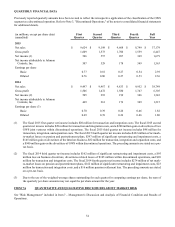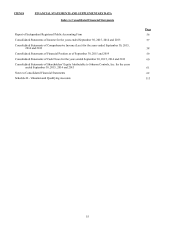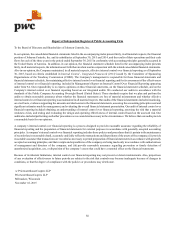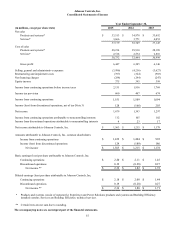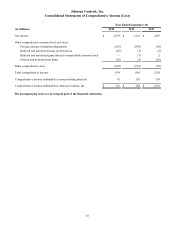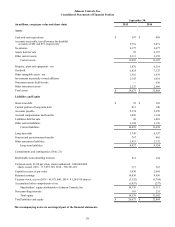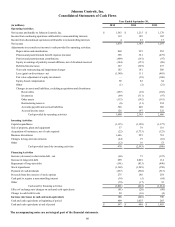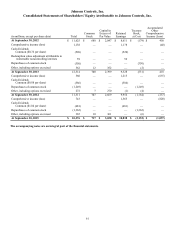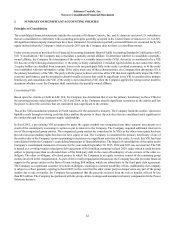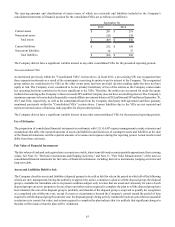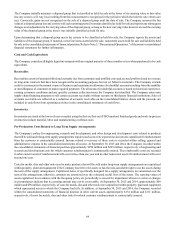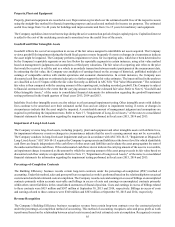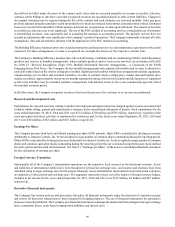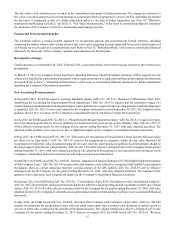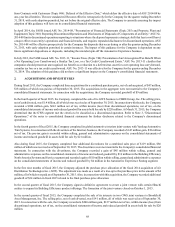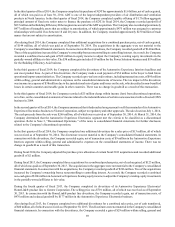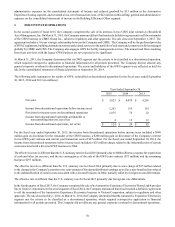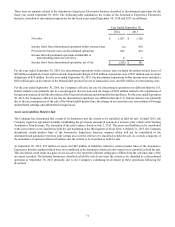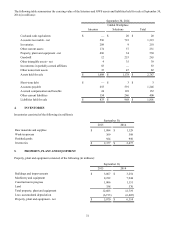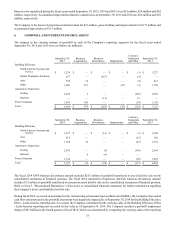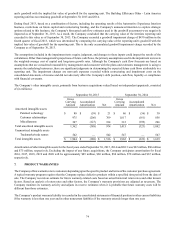Johnson Controls 2015 Annual Report Download - page 64
Download and view the complete annual report
Please find page 64 of the 2015 Johnson Controls annual report below. You can navigate through the pages in the report by either clicking on the pages listed below, or by using the keyword search tool below to find specific information within the annual report.64
The Company initially measures a disposal group that is classified as held for sale at the lower of its carrying value or fair value
less any costs to sell. Any loss resulting from this measurement is recognized in the period in which the held for sale criteria are
met. Conversely, gains are not recognized on the sale of a disposal group until the date of sale. The Company assesses the fair
value of a disposal group less any costs to sell each reporting period it remains classified as held for sale and reports any subsequent
changes as an adjustment to the carrying value of the disposal group, as long as the new carrying value does not exceed the carrying
value of the disposal group at the time it was initially classified as held for sale.
Upon determining that a disposal group meets the criteria to be classified as held for sale, the Company reports the assets and
liabilities of the disposal group, if material, in the line items assets held for sale, noncurrent assets held for sale and liabilities held
for sale in the consolidated statements of financial position. Refer to Note 3, "Discontinued Operations," of the notes to consolidated
financial statements for further information.
Cash and Cash Equivalents
The Company considers all highly liquid investments with an original maturity of three months or less when purchased to be cash
equivalents.
Receivables
Receivables consist of amounts billed and currently due from customers and unbilled costs and accrued profits related to revenues
on long-term contracts that have been recognized for accounting purposes but not yet billed to customers. The Company extends
credit to customers in the normal course of business and maintains an allowance for doubtful accounts resulting from the inability
or unwillingness of customers to make required payments. The allowance for doubtful accounts is based on historical experience,
existing economic conditions and any specific customer collection issues the Company has identified. The Company enters into
supply chain financing programs to sell certain accounts receivable without recourse to third-party financial institutions. Sales of
accounts receivable are reflected as a reduction of accounts receivable on the consolidated balance sheets and the proceeds are
included in cash flows from operating activities in the consolidated statements of cash flows.
Inventories
Inventories are stated at the lower of cost or market using the first-in, first-out (FIFO) method. Finished goods and work-in-process
inventories include material, labor and manufacturing overhead costs.
Pre-Production Costs Related to Long-Term Supply Arrangements
The Company’s policy for engineering, research and development, and other design and development costs related to products
that will be sold under long-term supply arrangements requires such costs to be expensed as incurred or capitalized if reimbursement
from the customer is contractually assured. Income related to recovery of these costs is recorded within selling, general and
administrative expense in the consolidated statements of income. At September 30, 2015 and 2014, the Company recorded within
the consolidated statements of financial position approximately $299 million and $265 million, respectively, of engineering and
research and development costs for which customer reimbursement is contractually assured. The reimbursable costs are recorded
in other current assets if reimbursement will occur in less than one year and in other noncurrent assets if reimbursement will occur
beyond one year.
Costs for molds, dies and other tools used to make products that will be sold under long-term supply arrangements are capitalized
within property, plant and equipment if the Company has title to the assets or has the non-cancelable right to use the assets during
the term of the supply arrangement. Capitalized items, if specifically designed for a supply arrangement, are amortized over the
term of the arrangement; otherwise, amounts are amortized over the estimated useful lives of the assets. The carrying values of
assets capitalized in accordance with the foregoing policy are periodically reviewed for impairment whenever events or changes
in circumstances indicate that its carrying amount may not be recoverable. At September 30, 2015 and 2014, approximately $60
million and $96 million, respectively, of costs for molds, dies and other tools were capitalized within property, plant and equipment
which represented assets to which the Company had title. In addition, at September 30, 2015 and 2014, the Company recorded
within the consolidated statements of financial position in other current assets approximately $134 million and $151 million,
respectively, of costs for molds, dies and other tools for which customer reimbursement is contractually assured.


